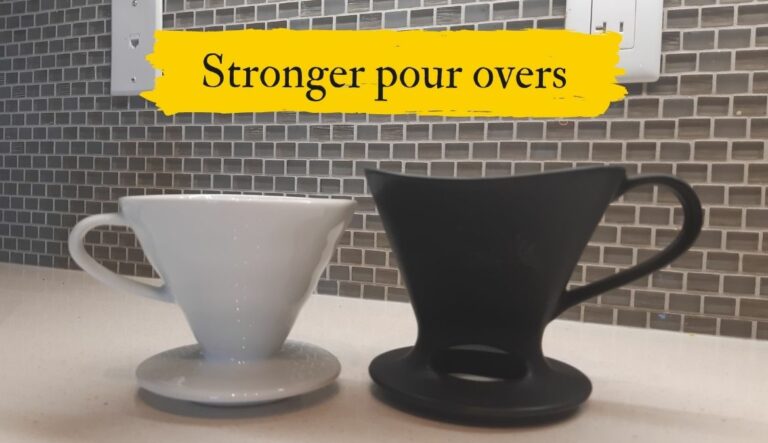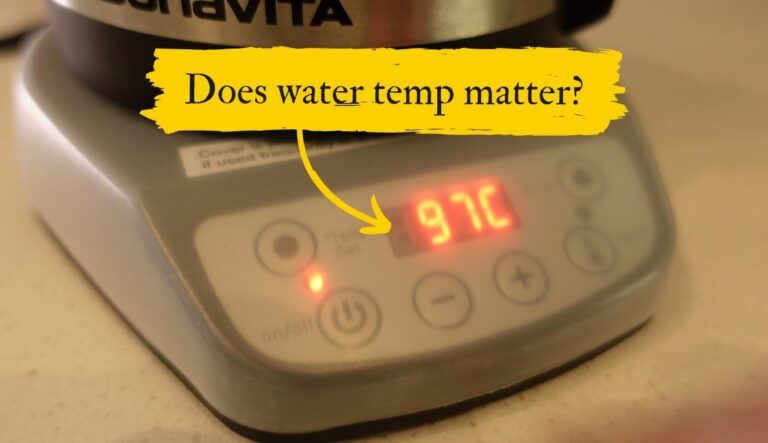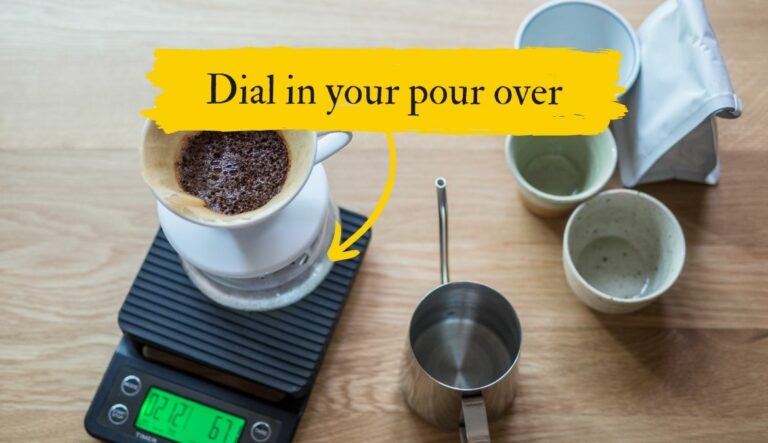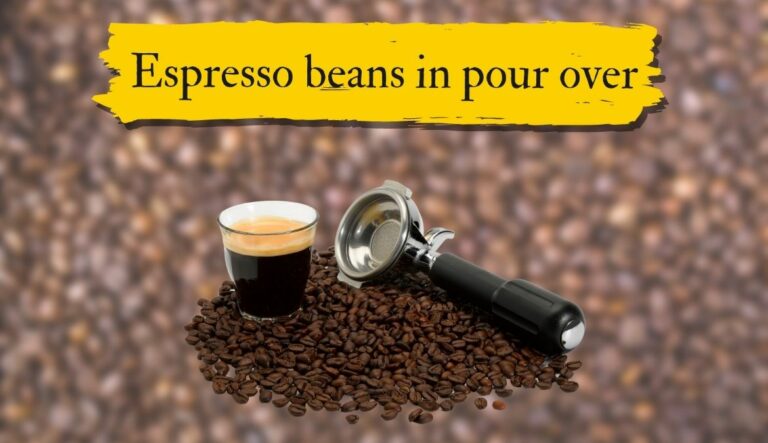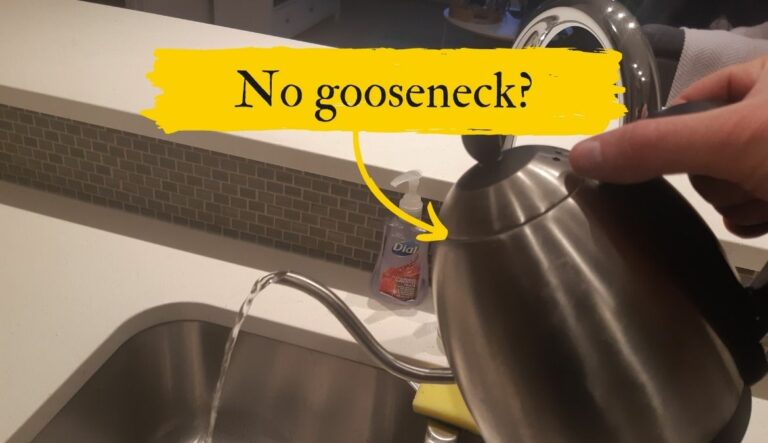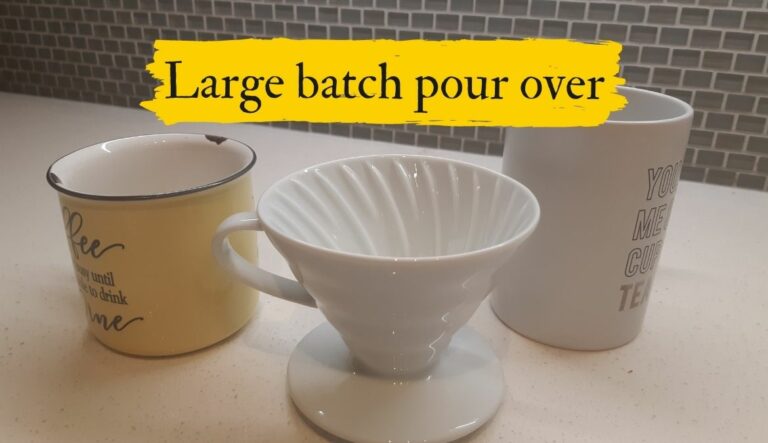Pour over coffee is one of the most popular methods for making tasty coffee at home. But one of its drawbacks is that it takes longer to brew and doesn’t sit on top of a heating pad like a common drip coffee maker does.
As a result, many coffee makers wonder how to keep their pour over coffee hot for longer. This article shares a few simple solutions to keep your morning brew hot for longer.

How to keep pour over coffee hot for longer
You can keep pour over coffee hot by using a vacuum insulated thermos or coffee mug, brewing with a higher water temperature, using a coarser grind size, or rinsing your mug with hot water. An insulated mug is the most effective method and doesn’t require a different brewing technique.
Boil your water at a higher temperature
Most experts recommend brewing pour over coffee with water that is between 195-205 degrees Fahrenheit (90-96 degrees Celsius). Keep your pour over coffee hotter by increasing your water temperature towards the upper end of this range.
Increasing your water temperature will cause extraction to occur more quickly. This means you will need to use a coarser grind size to accomodate for the temperature increase. Otherwise, your final beverage will be over extracted and will likely taste bitter.
A higher water brewing temperature will help your coffee remain hotter because it will take a little longer for the temperature to naturally drop to room temperature.
Use the correct grind size to reduce brewing duration
Using a grind size that is too fine will cause your coffee to brew for a longer period of time. This longer brew duration gives the water more time to lower in temperature.
A more coarse grind size will result in a shorter brew duration, which means the coffee will be a little hotter by the time you get to drink it. You will want to make sure that you use the correct coffee ratio and brew time to produce a tasty coffee.
Pre-warm your coffee mug with hot water
Coffee will slightly reduce in temperature when it’s poured into a mug of a lower temperature. Pouring 94 degree coffee into a 20 degree cup will naturally cause the coffee to transfer heat to the mug as it attempts to achieve equilibrium.
You can reduce the effect of equilibrium by rinsing your mug with hot water before brewing coffee into it. The effect may not be significant but it will certainly help to a small degree.
Holding a mug that is physically hotter to touch may even trick your brain into believing the coffee is hotter than it actually is.
Use an insulated coffee thermos or mug to retain heat
Standard coffee mugs do a poor job at retaining the heat that coffee gives off. This causes the coffee to cool down fairly quickly. You can prevent this heat exchange from happening quickly by using an insulated coffee thermos or mug, such as a Yeti mug.
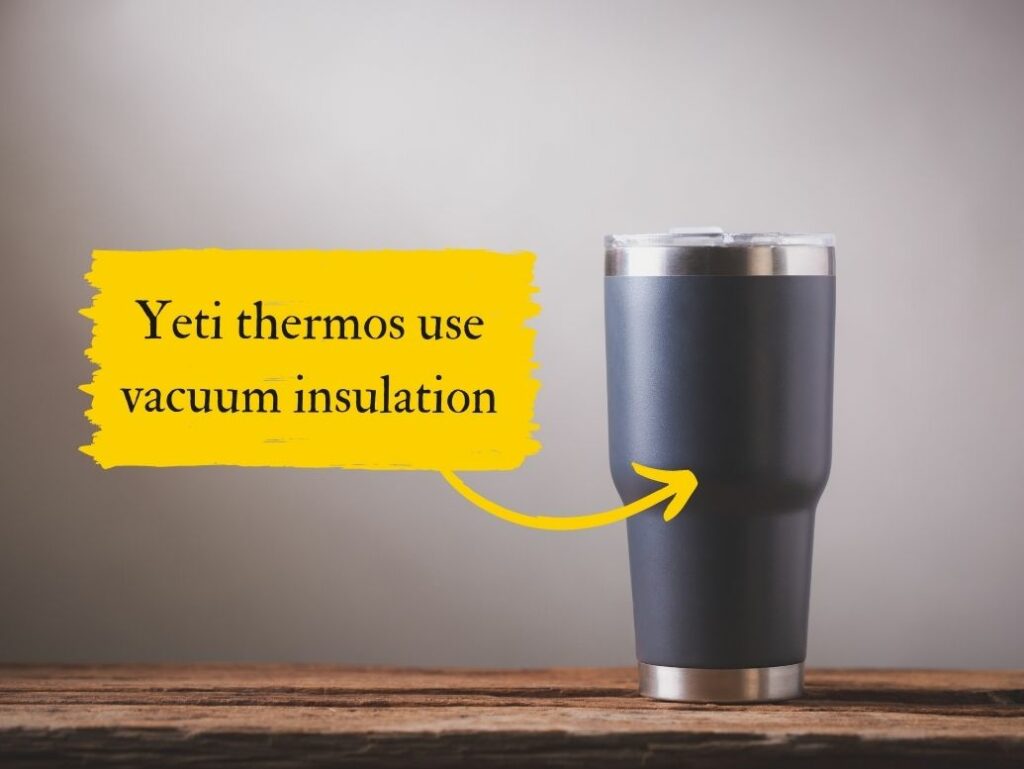
Energy moves from hot to cold. So what’s happening to your coffee is heat is moving out of your mug and into the surrounding environment.
This heat exchange happens in three ways: conduction, convection and radiation.
Coffee heat lost due to conduction
Conduction is heat transferred when two objects are touching each other. The heat energy passes between the two objects. In a standard coffee mug, your pour over coffee would pass energy into the ceramic mug material and then into the surrounding air.
A thermos solves this problem in an interesting way.
When thermoses are manufactured, the air between the inner and outer layer is evacuated, which creates a near-vacuum environment. This vacuum has no air particles for conduction to occur.
Also, thermoses are usually made of steel, or contain a steel layer. Steel is a poor heat conductor, which further minimized the rate at which your coffee will lose heat.
Coffee heat loss due to convection
Heat can be transfered through the air via convection, which is caused by fluids or air currents. Coffee heats the air around it, which then causes it to rise because it has a different density than cooler air around it. Heat exchange happens during this process, reducing your pour over temperature.
Convection requires air particles to happen. So the vacuum chamber of a thermos mug doesn’t allow convection to happen.
Also, the screw-on lid prevents air from entering or exiting the mug, which prevents heat exchange between the two air sources.
Coffee heat loss due to radiation
Radiation is the transfer of heat through waves. A thermos’s vacuum chamber will not prevent radiation heat loss. However, the mug is usually lined with copper, which helps to reflect some of the radiation that occurs.
Also, most thermoses have a polarized lid which keeps some UV radiation out from the sun.
While insulated mugs are not perfect at retaining heat, they are substantially better than standard ceramic coffee mugs.
What causes pour over coffee to lose heat?
Coffee loses heat through heat exchange. In other words, heat energy is transferred from one medium to another. Conduction, convection and radiation are the three methods of heat exchange.
Heat moves from hot to cold. Meaning, your coffee is losing its heat (in the form of energy) to the surrounding environment and the mug that it comes into contact with.
Why do people want their coffee to be hotter?
Some coffee drinkers like their coffee to be piping hot while others prefer it to be a little cooler. Some coffee drinkers have explained that hot coffee tastes better, while others enjoy the warm and cozy sensation of sipping on a hot beverage.
What’s interesting is how coffee is experienced and enjoyed in many different ways. There is no “correct” way to enjoy your morning brew.
A cooler temperature will bring out more coffee flavors
Many coffee connoisseurs and grading experts would argue that a slightly cooler coffee is better. The main reason is that a cooler temperature makes it easier to taste nuanced flavors without being overwhelmed by the scalding heat.
At the end of the day, enjoy your coffee in whatever way you prefer.

